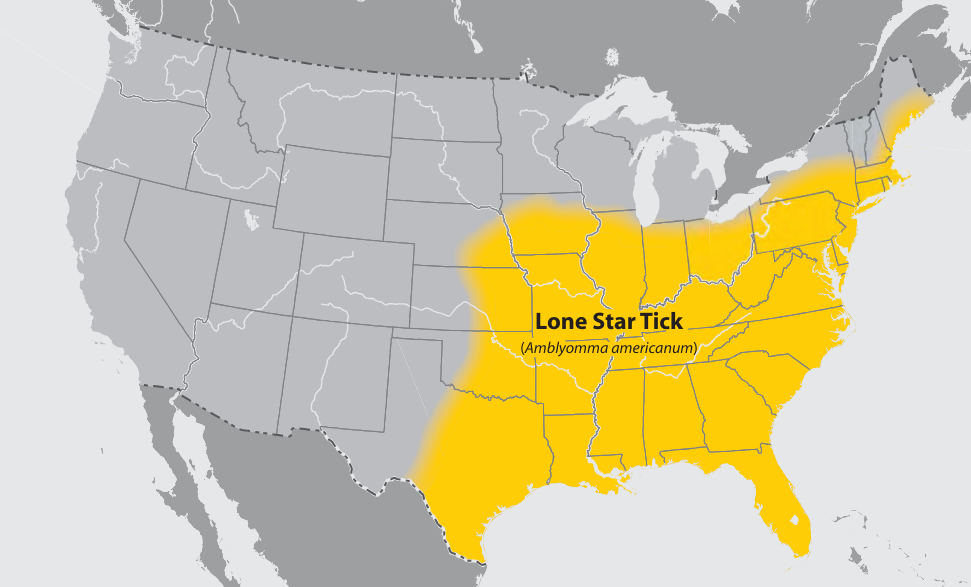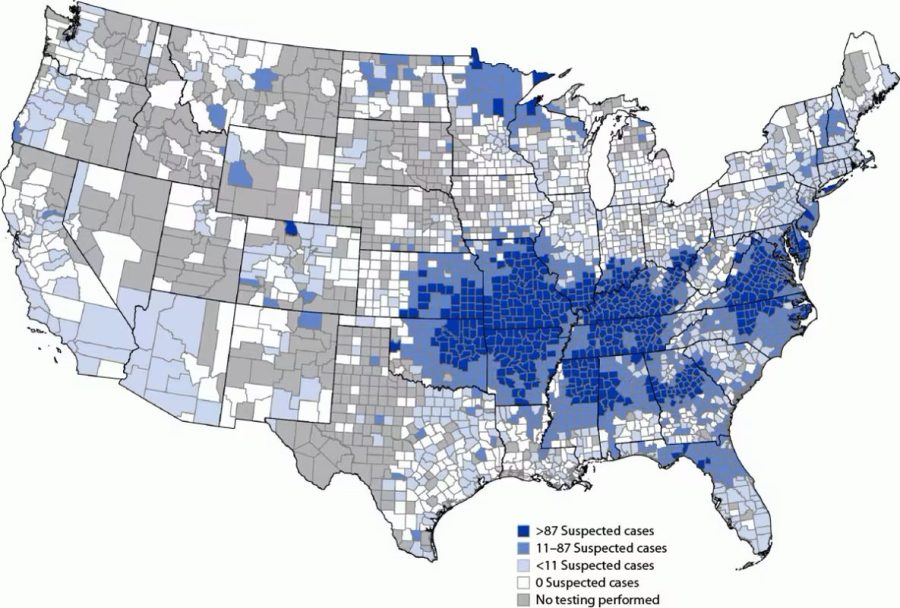Tick that can cause meat allergy may be spreading: What to know
(NEXSTAR) — A tick known to cause meat and dairy allergies appears to be continuing its northward spread, prompting new reminders from health officials.
The lone star tick, found primarily in southern states, has been on the move in recent years. According to the Centers for Disease Control and Prevention, the lone star tick has been confirmed in more than two dozen states.
Lone star ticks had, at one point, almost entirely disappeared from the northeast and Great Lakes region, Dr. Leslie Mertz explained in a 2022 article for Entomology Today. They’re now returning to those areas, thanks in part to shorter cold snaps during winter, the spread of invasive plants, and an increase in the deer population.
Now that summer is here, the lone star tick (as well as others) is better able to thrive. Some health officials are already warning that they’ve seen an uptick in tick activity, causing concern.
Here’s what you should know about the lone star tick.
What is a lone star tick?
Lone star ticks are like most other ticks but are described as fast-moving, aggressive biters. Adult female lone star ticks are the largest and have a single white dot on their backs. Male lone star ticks are smaller with black lines visible on their back.
Where has the lone star tick been reported?
Though it hasn’t been updated in recent years, the CDC map below shows the lone star tick’s reported range. The impacted range stretches from Texas north to Nebraska, east to Maine, then south to Florida.

Last month, the lone star tick was found in Ottawa County, Michigan — a state not included in the CDC map above. Parents found the tick crawling on their son, Nexstar’s WOOD reports. The tick had previously been reported in nearby Kalamazoo County as well.
A few states over in Kansas, health officials say they’re seeing more tick-associated conditions like alpha-gal syndrome, a disease the lone star tick is known to spread.
What is alpha-gal syndrome?
The syndrome is sparked by alpha-gal, a “combination of a carbohydrate in a protein” found in the cells of different organisms, but not humans, Dr. Seth Mobley, a family medicine doctor in Arkansas, told Nexstar’s KNWA. Humans can develop alpha-gal syndrome after being bitten by a tick with alpha-gal. Lone star ticks are most associated with alpha-gal, though other ticks may also be involved.
Sometimes known as AGS, alpha-gal syndrome is a potentially life-threatening allergy to red meat or other products made from mammals, according to the CDC. The agency reports that from 2010 to 2022, more than 110,000 suspected cases of AGC were identified in the U.S. The number is likely higher, though, because AGS is not a nationally notifiable condition.
Symptoms of alpha-gal syndrome align with other allergic reactions, like hives or itchy skin; coughing, shortness of breath, or difficulty breathing; and swelling of the lips, throat, tongues, or eyelids. According to the CDC, other symptoms include nausea or vomiting, severe stomach pain, heartburn or indigestion, diarrhea, a drop in blood pressure, and dizziness or faintness.
“Usually, it’s not as bad as a full anaphylactic reaction that you think about needing an EpiPen for or anything,” Dr. Mobley explained.
A 2023 study published by the CDC showed most suspected cases of AGS over the previous five years were in Missouri, Arkansas, Kentucky, Tennessee, and Virginia, as well as in parts of Kansas, Oklahoma, Mississippi, Alabama, Georgia, and North Carolina — all areas with a population of lone star ticks.

Is there a cure for alpha-gal syndrome?
Those with alpha-gal syndrome are often advised to stop eating meat from mammals, including pork, lamb, venison, rabbit, and beef, as well as milk products. The CDC notes, though, that some patients may not experience a reaction to every product that contains alpha-gal.
According to the Mayo Clinic, symptoms of AGS can lessen or disappear over time, with some patients able to eat products with alpha-gal again within a year or two.
Hayden Hurtig, who was diagnosed with AGS while in middle school, recently explained to Nexstar’s WDAF that he would have some allergic reactions after eating red meat. After avoiding the meat for roughly seven years, Hurtig, now 22, says he is once again able to eat it.
“That was the doctor’s best advice: if you can completely cut it out, you’ll be able to get over the allergy sooner than later,” Hurtig explained. “The more you eat it, the more it feeds it and [getting over it] will take longer.”
How to stay safe
Health officials say that the best way to prevent alpha-gal syndrome is to avoid tick bites.
That includes wearing bug repellant with at least 20% DEET, picaridin, or IR3535, as well as pants and long-sleeved shirts while outdoors. The U.S. Forest Service also says to avoid areas with high grass and leaf litter.
After coming indoors, the Forest Service recommends bathing or showering as soon as possible, which can make finding ticks easier. Be sure to fully check your body for the presence of ticks.
Copyright 2023 Nexstar Media Inc. All rights reserved. This material may not be published, broadcast, rewritten, or redistributed.





